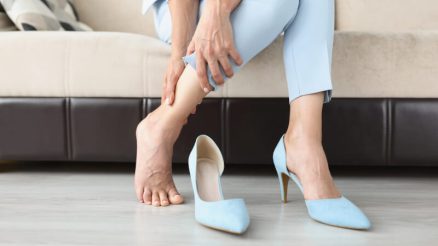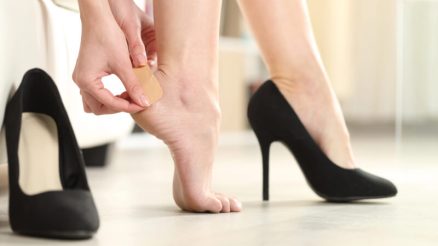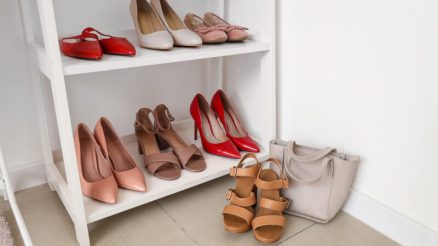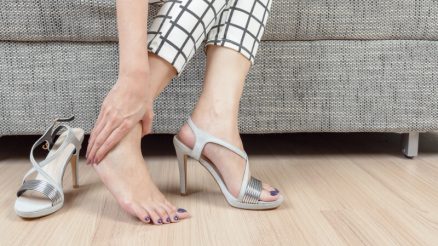Slipping and sliding in your favorite heels can be a real buzzkill, not to mention a safety hazard! Whether you’re navigating sleek office floors, a polished dance floor, or just everyday pavement, that feeling of instability can ruin your confidence and even lead to an unfortunate tumble. The good news is that you don’t have to sacrifice style for safety. With a few simple tricks and readily available items, you can transform those treacherous soles into reliable, grip-friendly footwear.
In this comprehensive guide, we’ll walk you through various effective methods to make your heels less slippery, ensuring you can stride with confidence and comfort.
Why Are My Heels So Slippery?
Before we dive into the solutions, it’s helpful to understand the culprits behind slippery soles. Often, brand-new shoes come with smooth, untreaded soles that offer little to no friction. Over time, normal wear and tear can also smooth out existing treads, making them less effective. Additionally, certain sole materials, especially synthetic ones, can be inherently more slippery on specific surfaces.
Effective Methods to Increase Traction
Here are the best ways to add grip to your heels:
1. Scuff Up the Soles (The Simplest Fix)
This is the oldest trick in the book for a reason: it works! New shoes often have perfectly smooth soles that lack the necessary friction.
- How to do it: Take your new heels outside onto a rough surface like concrete or asphalt. Gently scuff the bottom of the soles against the ground. Don’t press too hard or damage the shoe itself; you just want to create a slightly textured, worn surface. Walk back and forth a few times.
- Why it works: The slight abrasion creates micro-grooves and roughens the surface, instantly increasing friction with the ground.
- Best for: Brand new shoes with perfectly smooth soles.
2. Use Sandpaper or a Nail File
If scuffing outdoors isn’t an option or you need a more controlled approach, sandpaper or a coarse nail file can do the trick.
- How to do it: Choose a medium-grit sandpaper (around 80-120 grit) or a sturdy nail file. Gently rub the sandpaper back and forth across the smooth areas of the sole, particularly the ball of the foot and the heel. Aim to create a cross-hatch pattern for maximum grip. Wipe off any dust afterward.
- Why it works: Similar to scuffing, this method manually abrades the sole, creating a textured surface that enhances grip.
- Best for: More precise texturing or when you can’t go outside.
3. Apply Anti-Slip Traction Pads
For a more durable and professional solution, anti-slip traction pads are an excellent investment. These are adhesive-backed pads made of rubber or other high-friction materials.
- How to do it: Clean the soles of your shoes thoroughly to ensure good adhesion. Peel off the backing from the traction pads and firmly press them onto the ball of the foot area of your shoe, or on the heel, depending on where you need grip. Trim any excess if necessary. Allow them to set for a few hours before wearing.
- Why it works: These pads are specifically designed with textured surfaces and often have deeper grooves to provide superior grip on various surfaces.
- Best for: Long-term solutions, frequently worn shoes, or when you need reliable, enhanced grip.
4. Hairspray or Anti-Slip Spray
In a pinch, a quick spritz of hairspray can offer temporary traction. There are also specialized anti-slip sprays designed for shoes.
- How to do it (Hairspray): Hold the hairspray can about 6-8 inches away from the sole and spray a generous, even layer over the entire bottom surface. Allow it to dry completely before walking. Reapply as needed.
- How to do it (Anti-Slip Spray): Follow the manufacturer’s instructions, but generally, you’ll spray an even coat and allow it to dry. These sprays often contain polymers that create a tacky, non-slip layer.
- Why it works: Hairspray leaves a slightly sticky residue that increases friction. Anti-slip sprays are formulated for this purpose, creating a more effective and sometimes longer-lasting tacky surface.
- Best for: Temporary fixes, last-minute emergencies, or specific events. Be aware that hairspray can wear off quickly.
5. Fabric Softener Sheets
This might sound unusual, but the waxy residue on fabric softener sheets can surprisingly provide a temporary grip boost.
- How to do it: Rub a fresh fabric softener sheet firmly over the entire sole of your shoe, focusing on the smoothest areas. You’ll feel a slight tacky residue forming.
- Why it works: The waxy coating on the sheet transfers to the sole, creating a subtle stickiness that improves friction.
- Best for: A quick, temporary fix when you’re out and about and need immediate relief from slipperiness.
6. DIY Glue or Puff Paint (Use with Caution)
For a more permanent, DIY textured solution, you can use hot glue or puff paint. Use this method with extreme caution and only on shoes you don’t mind potentially altering permanently.
- How to do it: On a clean, dry sole, apply small dots or a wavy pattern of hot glue or puff paint across the ball of the foot and heel. Allow it to dry completely and harden for several hours (or as per product instructions).
- Why it works: The dried glue or paint creates raised, textured bumps that act as mini-treads.
- Best for: Shoes that are already well-loved and where a visible DIY solution is acceptable. Test in an inconspicuous area first.
Tips for Walking on Slippery Surfaces
Even with grip-enhanced heels, sometimes you’ll encounter extremely slick surfaces. Here are some walking tips to keep in mind:
- Take Shorter, Slower Steps: Reduce your stride length and walk at a more deliberate pace. This gives you more time to react and adjust your balance.
- Distribute Your Weight Evenly: Try to keep your weight centered over your feet. Avoid leaning too far forward or backward.
- Engage Your Core: A strong core helps with overall balance and stability.
- Look Where You’re Going: Pay attention to the floor ahead and identify any particularly slippery spots.
- Consider a Different Shoe: If you know you’ll be on an extremely slick surface for an extended period, sometimes the best solution is to opt for a shoe with a naturally better grip (e.g., rubber-soled flats or boots).
Conclusion
Slippery heels are a common annoyance, but they don’t have to be a permanent problem. By using one or a combination of these simple yet effective methods, you can significantly increase the traction of your footwear. From quick fixes like scuffing and hairspray to more durable solutions like traction pads, there’s an option for every situation and every type of shoe. So go ahead, step out with confidence, knowing your heels have got your back (or rather, your feet!).








